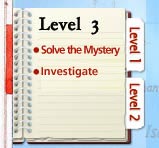Biodiversity (bye-oh-duh-
vurs-it-ee)
The rich variety of life on earth: “bio” means “life,”
and “diversity” means "variety."
DNA (dee en ay)
The molecule that carries the genetic code that gives living
things their special characteristics
Ecosystem (ee-koh-siss-tuhm)
A community of animals and plants interacting with their environment
Extinct (ek-stingkt)
A species of animal or plant that is no longer living
Heredity (her-red-uh-tee)
The passing on of traits from parents to children through the
genes
Mutant (myoot-uhnt)
A living thing that has developed a new characteristic different
from its parents’ genes. Mutations are rare.
Natural Selection (nach-ur-uhl
sul-lek-shuhn)
The process in nature where animals or plants better suited
to their environment produce more offspring than less well-adapted
plants and animals
Trait (trate)
A quality or characteristic that makes one person or thing different
from another
Variation (vair-ee-
ay-shuhn)
A difference between individuals of the same species







